Setting impactful goals is key to empowering service users, especially if they are individuals with learning disabilities.
Service users will often need specific assistance in turning their wishes into realistic, achievable goals that result in positive changes in their lives. This can be challenging without the right tools to help carers better collaborate with them and can lead to goals that aren’t relevant to the service user’s needs.
Log my Care customers enjoy an easy, time-saving way to digitally track and evidence service user progress.
To improve the way you set and manage goals, this blog post will give you an overview of how you can best use the platform for effective goal setting, without added admin.
Why you should use Outcomes and Goals to set service user goals
At Log my Care, the importance of goals is at the forefront of providing person-centred care plans.
Goals provide purpose, help maintain focus and drive, and contribute to well-being and a sense of accomplishment – all of which are crucial to help service users progress.
Person-centred plans focus on what's important to the service user, so staff need to work with them through effective communication, observation, and consultation.
This is why Log my Care’s Outcomes and Goals feature is one of the most effective ways to set impactful goals.
It enables care teams to actively collaborate with service users to create person-centred goals, monitor progress through action plans, and track outcomes that you can easily evidence.
What is the best way to use Outcomes and Goals to set service user goals?
The best way to use Log my Care’s Outcomes and Goals feature is to involve the service user in the goal-setting process.

With Outcomes and Goals, managers can evidence service user involvement in the goal-setting process by empowering them to collaborate and countersign each goal that they set.
This demonstrates the service user’s agreement to the goals that have been set for them.
How does Outcomes and Goals work?
After adding goals to the platform, the care team and service users have a range of functionalities at their fingertips, including:
- Creating action plans to break down goals into small, achievable steps, fostering collaboration between service users and the care team.
- Linking relevant care plans to specific goals, providing a comprehensive view for the care team, ensuring holistic care delivery.
- Linking care logs to specific goals to manage progress efficiently and maintain evidence of the steps taken to achieve a goal.
- Increasing oversight with a built-in timeline to keep the team informed about goal-related changes, such as linking care logs and service user goal signatures. Time and name stamps improve accountability and provide evidence of support.
The feature is available for Log my Care customers on an Outstanding plan. Users with manager-level access can create new goals in the Care Office, within the Care Planning section.
For increased clarity, you can include a description of the goal, a measurement of success, as well as a duration of when the goal should be aimed to be completed by. These all contribute to making the goal a SMART one: specific, measurable, attainable or achievable, relevant or realistic, and time-bound.

Learn more about using the feature to its fullest by watching our pre-recorded Outcomes and Goals webinar.
How to use Outcomes and Goals
Step 1. Navigate to 'Goals' in 'Care Planning' in the 'Client' menu and click on '+ Add Goal'.
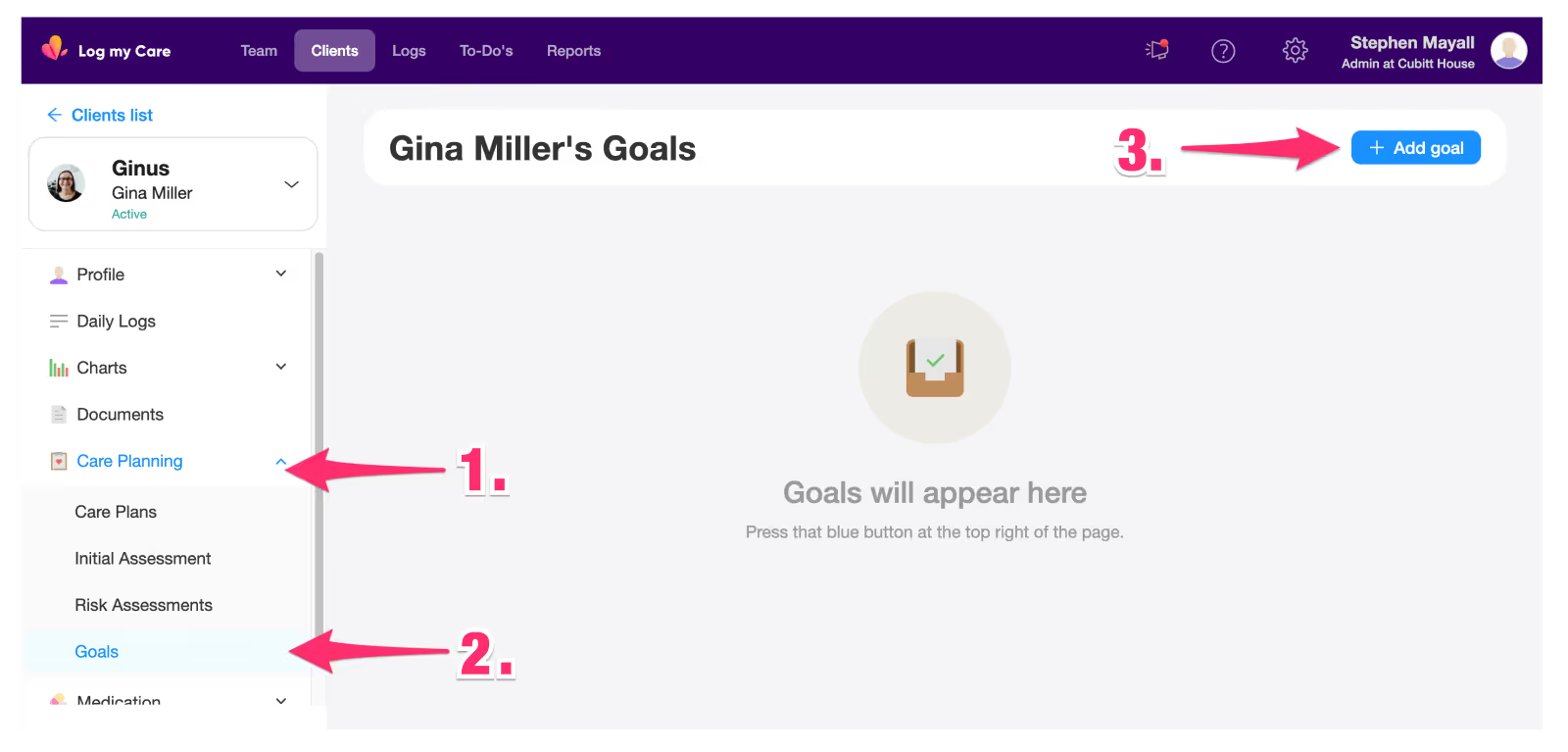
Step 2. Set your overall goal in the top empty field, then describe the goal in more detail in the ‘Description’ field. You can then include what success looks like in the ‘Measure of Success’ field.
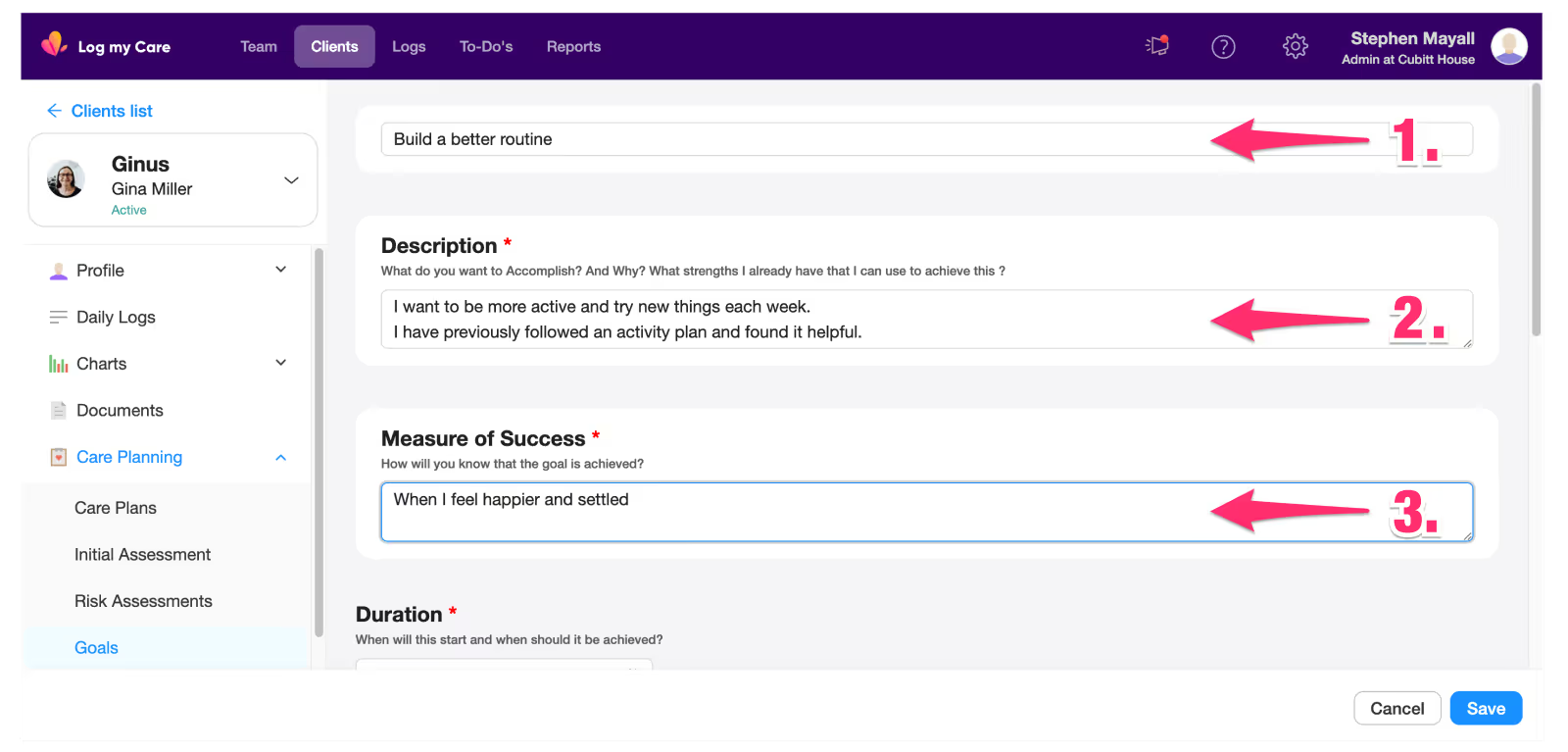
Step 3. Specify start and end dates, highlight goal importance, and outline further steps for service user achievement.
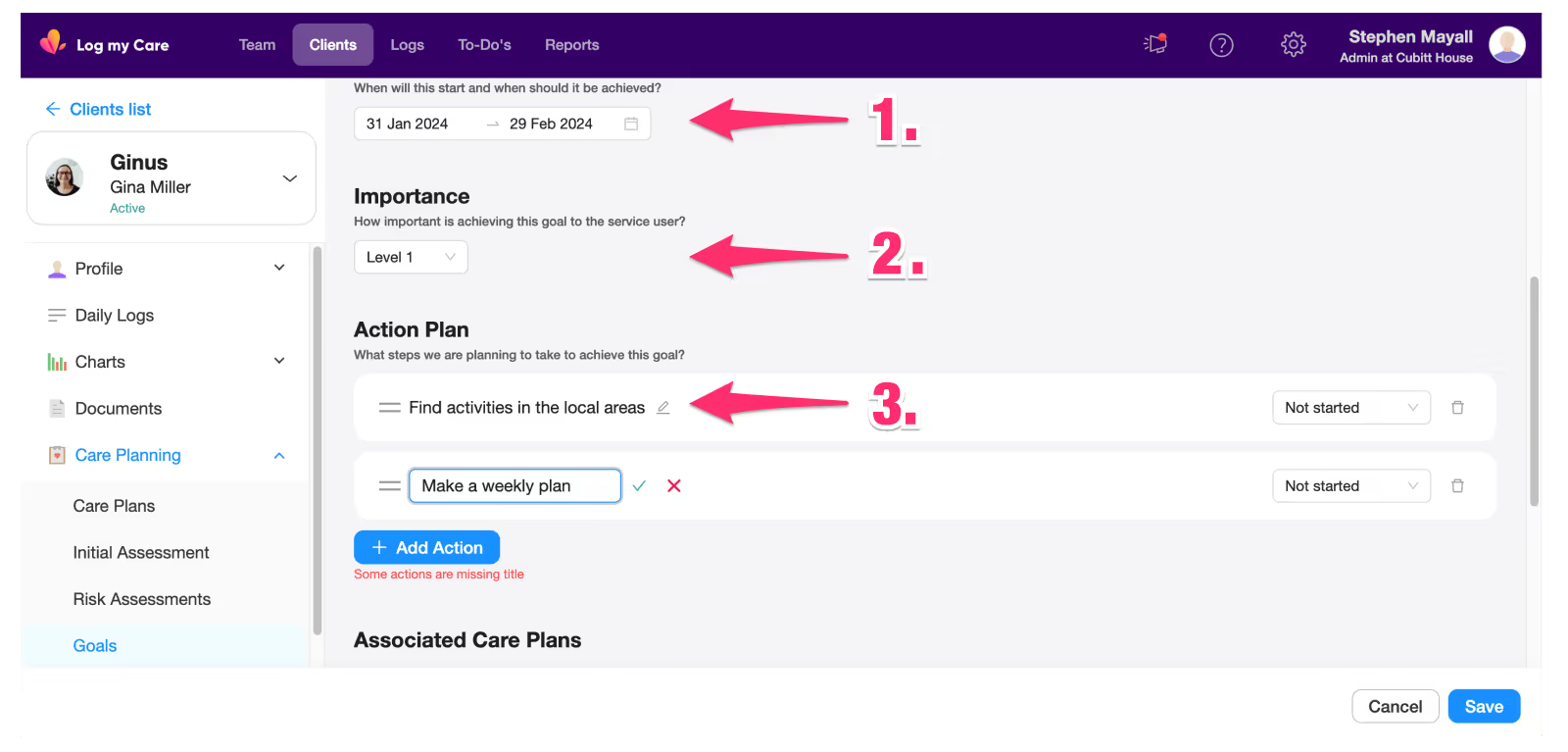
Step 4. To add relevant care plans or additional documents, click ‘+ Link Care Plan’ or ‘+ Add Document’, and select from the drop-down menu.
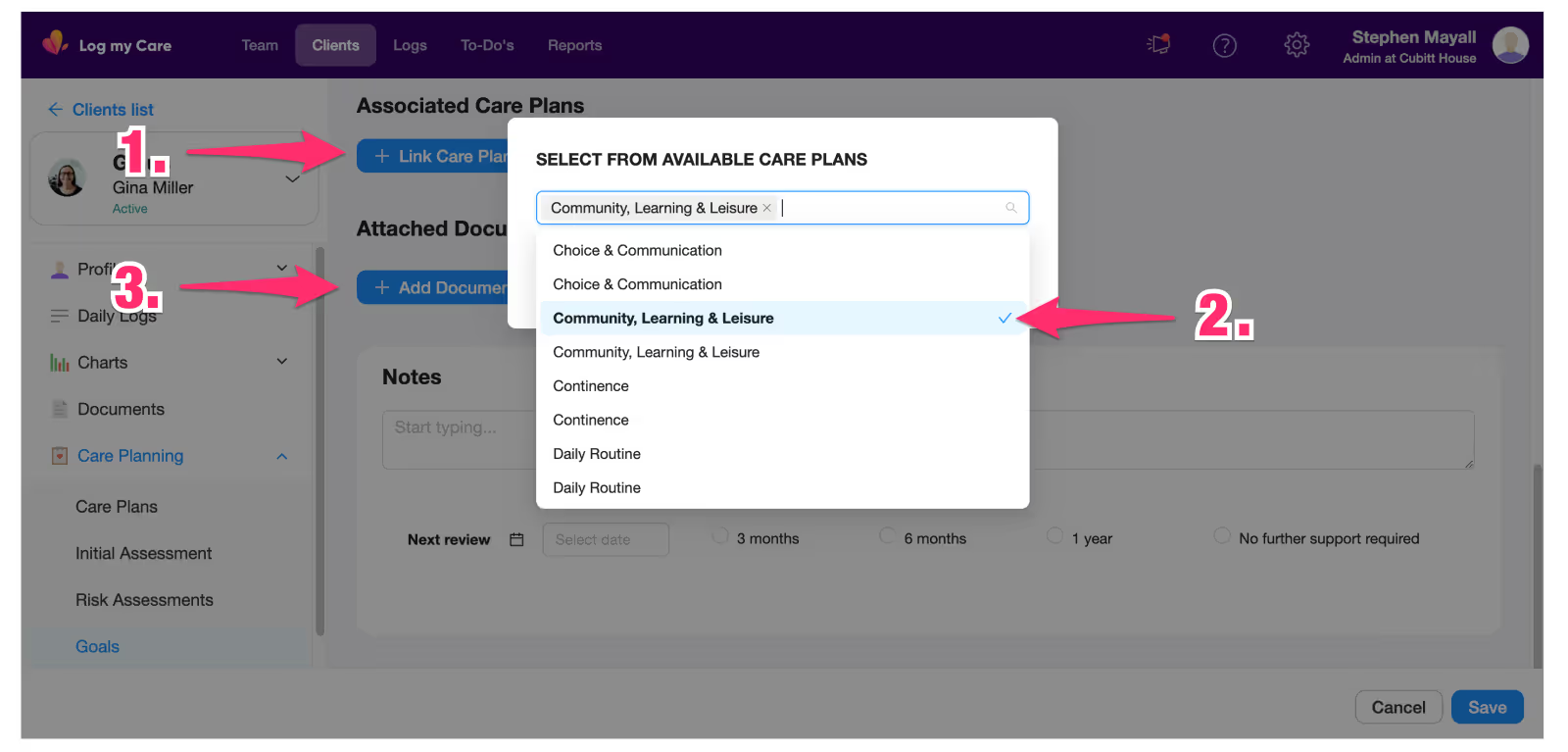
Step 5. Set the status of the goal to assist in monitoring progress.
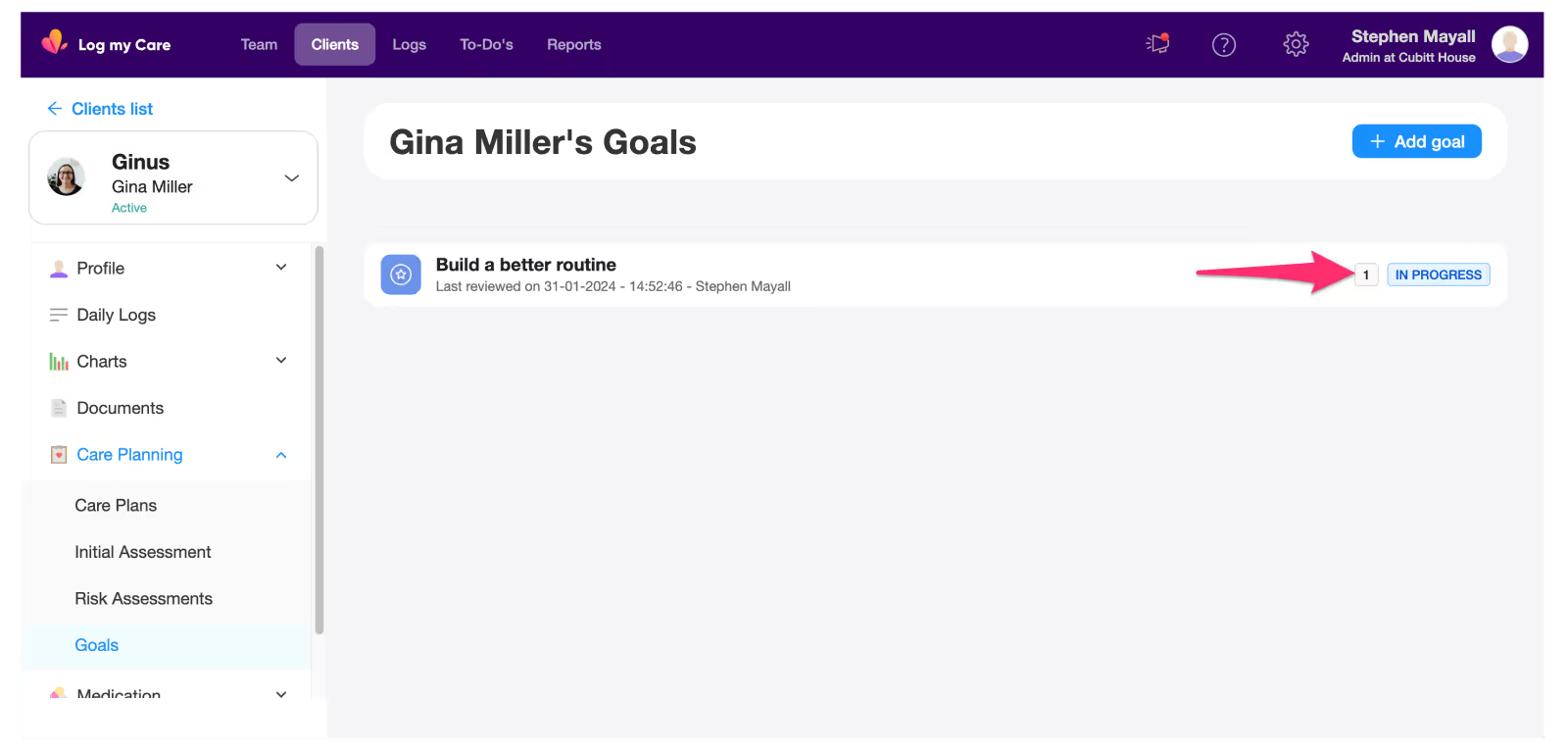
Step 6. Enjoy a seamless experience for goal tracking for you and your service user.
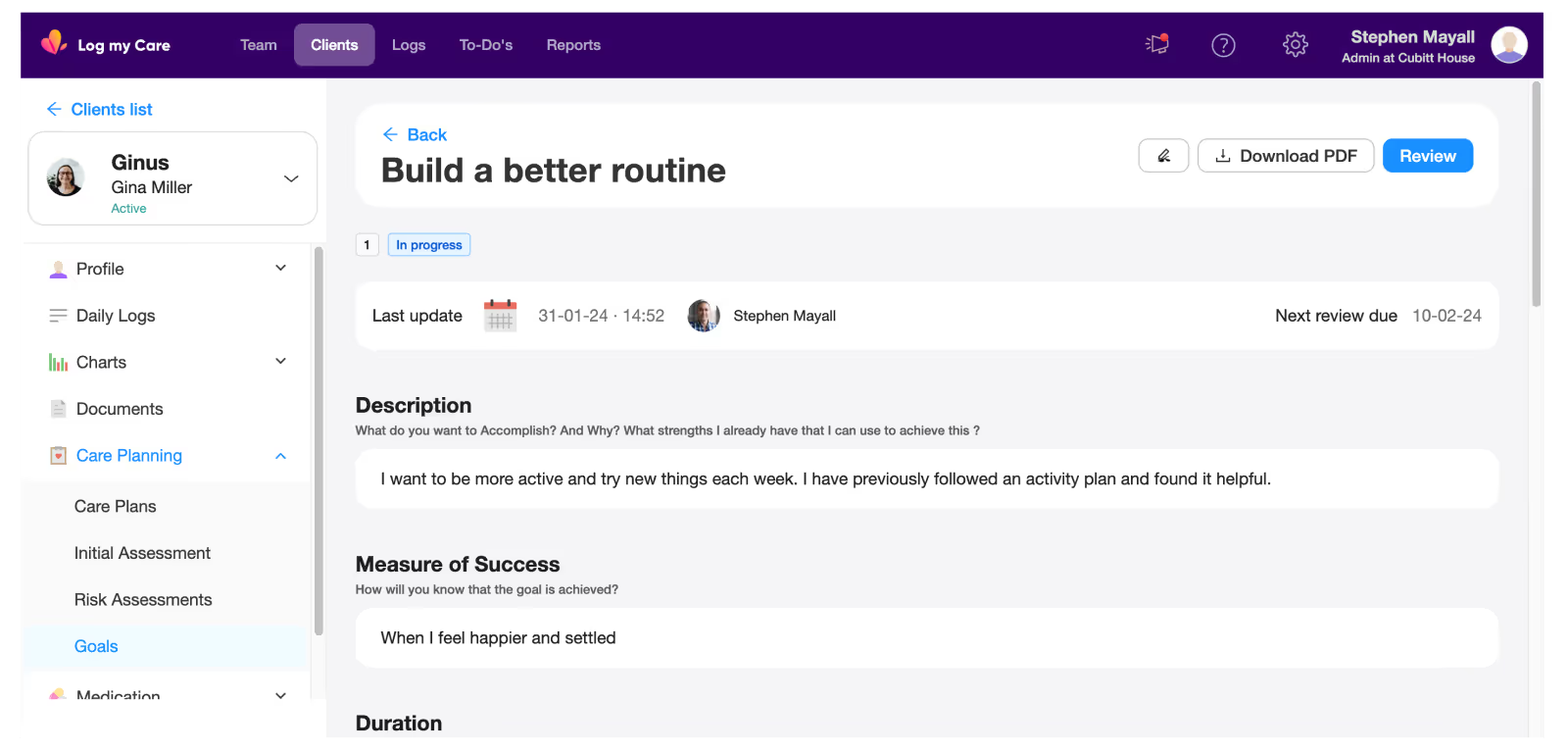
What makes Outcomes and Goals different for care teams?
Collecting data to evidence the impact of your team's care delivery and service user goal achievements can be challenging.
The well-being and progression of your service users are at the core of everything you do. This is why Log my Care built Outcomes and Goals to not only be easy to use, but also as comprehensive as possible.
It allows users to set, manage and evidence progress – all in one place.
Outcomes and Goals enables care teams to:
- Set goals for service users and evidence progress
- Create an action plan for each goal and add relevant documents
- Link care plans to each goal
- Empower service users to digitally sign their goals
- Track goals’ progress by linking logs
- Review goals.
This creates a smooth and centralised process compared to paper-based goal setting.
It also encourages more efficient team coordination. Having all your service users’ information in one central place will help you make well-informed decisions to provide better person-centred care. Additionally, it ensures that the information is always up to date, safely stored, and easily accessible to relevant carers.

Improving service user engagement in goal setting
When involving service users in the goal-setting process, chances are they’re more likely to participate in the process and be committed to completing that goal. This is because they’ll feel included in the care planning process.
When working with your service users, consider the following tips to ensure the planning process is person-centred:
- Why is the goal important for the service user?
- What necessary steps are needed to complete the goal?
- Will extra resources be required to help them accomplish the goal?
- Who will be involved to support them?
- When can it realistically be achieved by?
Outcomes and Goals enables care teams to add extra information as needed. Alongside its timeline functionality, it creates automatic records to evidence service user progress and care team involvement, as well as any goal-related activities.
Examples of service user goals
Another great factor to setting service user goals with Outcomes and Goals is the fact that you can track the progress of multiple goals at once.
Care teams can set any relevant goals that their service users want to achieve, with a few examples including:
- Learning to play chess, or other activities like cooking, swimming or football
- Brushing their teeth twice a day
- Managing their own finances
- Traveling alone
- Getting a job.
Outcomes and Goals can easily provide evidence for CQC inspections, as well as commissioners, social workers or other relevant professionals. Keeping your team up to date with new outcomes or actions will be easier as they’ll be able to view all the recent activity through the Carer App – ensuring no activities and efforts are duplicated.
.png?noresize)
-Jul-14-2025-10-57-19-3091-AM.png)


